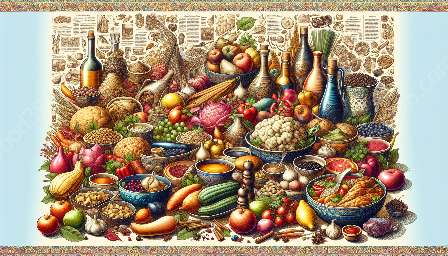The Industrial Revolution had a profound influence on the evolution of cooking techniques, tools, and food culture. It transformed the way food was prepared and consumed, leading to the development of modern culinary practices and innovations that continue to shape cooking today.
Evolution of Cooking Techniques and Tools
Before the Industrial Revolution, cooking was predominantly done over open fires or with basic tools such as pots, pans, and wooden utensils. However, the introduction of new technologies during the Industrial Revolution revolutionized the way people prepared and cooked food.
One of the key innovations was the development of the cast iron stove, which allowed for more controlled and efficient cooking. This advancement significantly improved cooking techniques, enabling precise temperature control and the ability to cook multiple dishes simultaneously. The cast iron stove also contributed to the rise of baking as a popular cooking method, as it provided consistent heat distribution for baking bread and pastries.
Another significant development was the invention of the pressure cooker, which revolutionized the process of food preservation and cooking. The pressure cooker allowed for faster cooking times and retained more nutrients in the food, which was particularly important during times of scarcity and rationing.
Furthermore, the Industrial Revolution saw the mass production of kitchen utensils and appliances, such as knives, graters, and blenders, which made cooking more efficient and accessible to a wider population. These advancements in cooking tools and technologies continue to influence modern culinary practices.
Origin and Evolution of Food Culture
Alongside the evolution of cooking techniques and tools, the Industrial Revolution had a profound impact on food culture. The shift from rural agrarian communities to urban industrial centers led to changes in dietary habits and the availability of food.
Industrialization brought about the development of new food preservation methods, such as canning and refrigeration, which extended the shelf life of perishable foods and expanded the variety of foods available year-round. This led to the diversification of food choices and the adoption of new ingredients and cuisines into mainstream cultures.
Additionally, the mechanization of food production and distribution led to the commodification of food, as well as the standardization of food products. This uniformity in food production influenced the development of culinary traditions and the globalization of food culture.
The Industrial Revolution also transformed social dining practices. The emergence of restaurants, cafés, and fast-food establishments provided new dining experiences and introduced convenience foods to the masses. These changes in food consumption and dining habits continue to shape contemporary food culture.
Conclusion
The Industrial Revolution played a pivotal role in shaping modern cooking techniques, tools, and food culture. It ushered in a new era of culinary innovation and advancements, leading to the evolution of diverse cooking practices and the globalization of food culture. The impact of the Industrial Revolution on cooking continues to resonate in the way we prepare, consume, and appreciate food in the present day.


